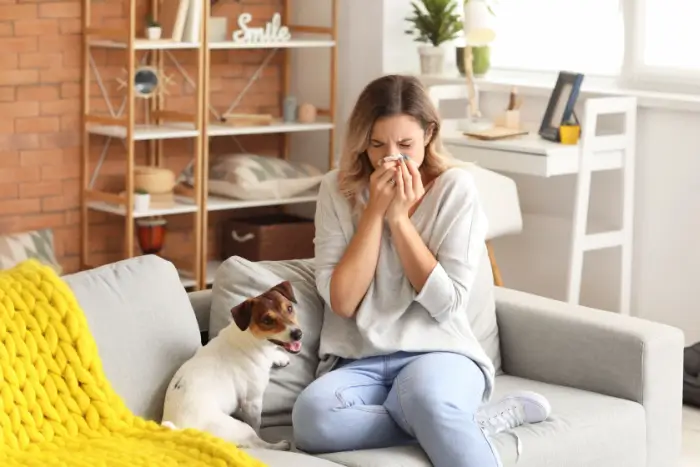
Good health begins at home. Regular cleaning not only keeps your home looking beautiful but also serves the vital purpose of battling unseen allergens. Our cleaning pros have some valuable tips on how to remove allergens from your home that will help keep your living spaces as healthy as possible.
Table of Contents:
- Identify and Remove Common Allergens
- Cleaning Tips to Reduce Allergens in Your Home
- Thoroughly Clean Your Home Regularly
- Don't Use Scented Cleaners or Detergents
- Wash Bedding Weekly in Hot Water
- Don’t Air-Dry Laundry
- Keep Bathroom Moisture to a Minimum
- Keep Shoes and Outdoor Clothing Outside
- Invest in a HEPA Filter
Identify and Remove Common Allergens
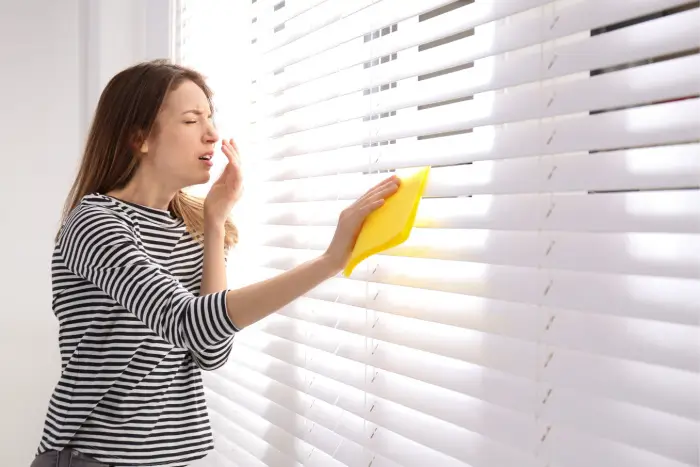
A healthier environment is within your reach once you know how to reduce allergens in your home. Dust mites, pet dander, and mold are three common allergens that often hide in plain sight. They not only cause suffering for those who are allergic to them but also can irritate the lungs and eyes of everyone in the home.
Regularly dusting surfaces and washing bedding in hot water can help reduce dust mite populations. Pet dander can be controlled by grooming your pet frequently and cleaning their bedding often. Regular inspection and cleaning of damp areas in your home will keep mold and mildew at bay. These tips for how to remove allergens in your home will lead to healthier air quality for everyone in your home.
Now that you're familiar with common indoor allergens, let's delve into specific cleaning strategies to reduce allergens in your home.
Cleaning Tips to Reduce Allergens in Your Home
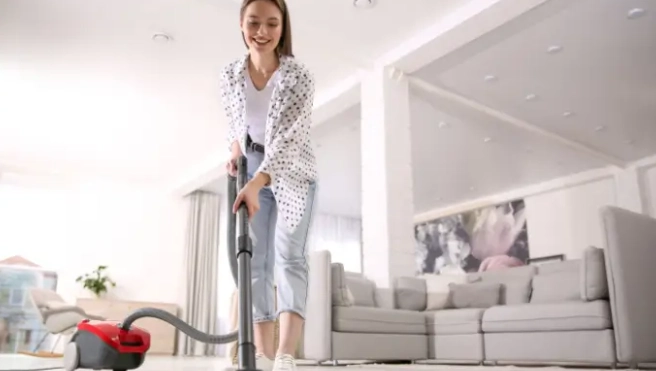
While reducing allergens in your home is the goal, consistency is the key to getting it done. Applying these cleaning tips consistently will keep your home looking good, smelling fresh, and reduce allergens in your home.
- Clean hard floors with a damp mop.
- Remove dust from all surfaces, including easy-to-forget spots like ceiling fans, windowsills, window frames, door frames, and blinds.
- Dust with a damp microfiber cloth for best results.
- Vacuum carpets and cushions, and use a micro-filter vacuum bag or a HEPA filter.
- Run a HEPA air purifier in the room.
- Replace your HVAC air filters every two to three months with HEPA air filters.
- Inspect air ducts for dust buildup on the duct walls and clean them if needed.
- Steam clean carpets every six months.
- Wash drapes and curtains.
- Clean your air vents with a vacuum brush attachment.
- Keep your house temperature at 70⁰ F or below with relative humidity at 50% or below. This will create a less attractive environment for dust mites and mold spores.
Some household furnishings, such as carpets, area rugs, and blinds, are notorious dust and allergen collectors. When learning how to remove allergens in the home, consider replacing them or at least focusing additional cleaning efforts on them.
While these cleaning tips are a great start to reducing allergens in your home, regular cleaning can yield even better results.
Thoroughly Clean Your Home Regularly

Understanding how to remove allergens from your home involves a commitment to regular cleaning. Key areas such as carpets, furniture, and air filters should be your focus. Carpets and furniture are often hotspots for dust and dander, while clean air filters do a better job trapping particulates and keeping them out of the air you breathe. This routine will help create a healthier living space.
Alongside a thorough cleaning, it's also important to consider the cleaning products you use to reduce allergens in your home.
Don't Use Scented Cleaners or Detergents
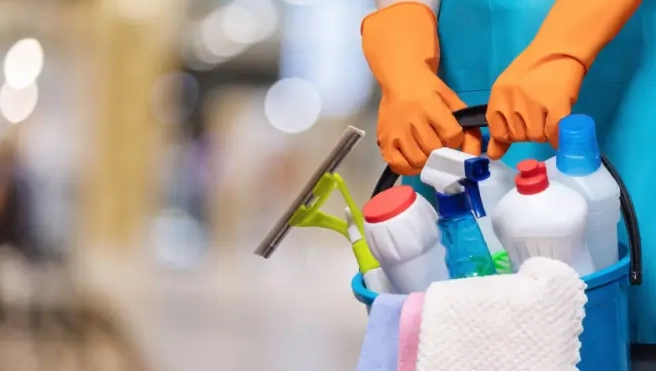
When working to reduce allergens in the home, it's essential to avoid scented cleaners and detergents. While their fragrances might be pleasing, the chemicals used to create the artificial scent can trigger allergies or irritate those sensitive to these scents. Choosing fragrance-free, eco-friendly cleaning products lets you enjoy a genuinely clean environment without the risks associated with artificial fragrances.
While choosing the right cleaning products is crucial to reducing allergens in your home, specific cleaning practices are equally significant.
Wash Bedding Weekly in Hot Water
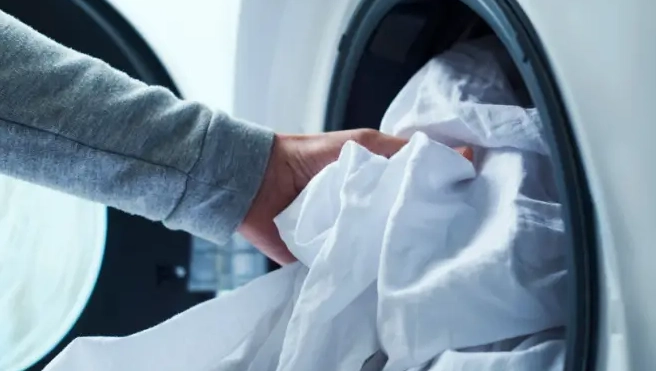
If you're looking for effective ways to remove allergens from your home, start with your bedding. Weekly washing in hot water can eliminate dust mites and other allergens that build up in your bedding. Make sure to include sheets, pillowcases, and comforters in your weekly washes to eliminate these irritants. The hot water cycle is crucial, as it's the heat that effectively kills dust mites, leading to a more allergy-friendly sleeping environment.
It's not just washing your bedding but also about how you dry your laundry that can affect allergen levels.
Don’t Air-Dry Laundry
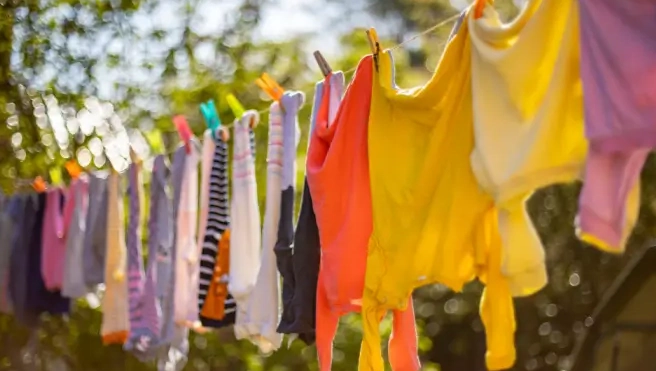
The sun-kissed scent and softness of clothes dried outdoors are undeniably alluring. However, this natural drying method has a downside when it comes to allergens. As your clothes sway in the breeze, they're also catching pollen and mold spores, carrying them right back into your home. So, when you’re working to reduce allergens in the home, skip drying your laundry outdoors. Switch to an indoor drying rack or an efficient clothes dryer to keep your clothes free from these outdoor allergens.
There’s another frequently overlooked source of indoor allergens — humidity in the bathroom.
Keep Bathroom Moisture to a Minimum

When it comes to reducing allergens in your home, keeping bathroom moisture under control is crucial. Bathrooms provide the perfect breeding ground for mold and mildew due to their humid conditions. If you want to know how to get rid of allergens in the home, start by reducing bathroom humidity. Use an exhaust fan during and after your shower or bath, or open a window to allow steam to escape. Another helpful tip is to squeegee or wipe down wet surfaces after showering, reducing the potential for mold and mildew development. Consider drying damp towels in another room. You might also use a dehumidifier or desiccant canister.
In addition to managing indoor moisture, we must also be cautious about allergens we're bringing in from outside.
Keep Shoes and Outdoor Clothing Outside
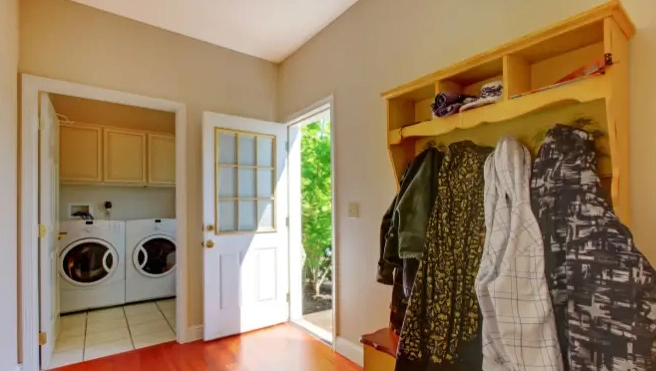
Shoes and outdoor clothing can bring allergens, such as pollen and mold, from the outside world into your home. A simple solution is to designate an area near the entrance of your home for these items. Using a doormat to wipe shoes and an outdoor shoe rack with a cover to store them can be an effective way to reduce allergens in the home.
As hard as we try, we cannot keep all airborne allergens out of our homes. For the rest, try a HEPA filter.
Invest in a HEPA Filter
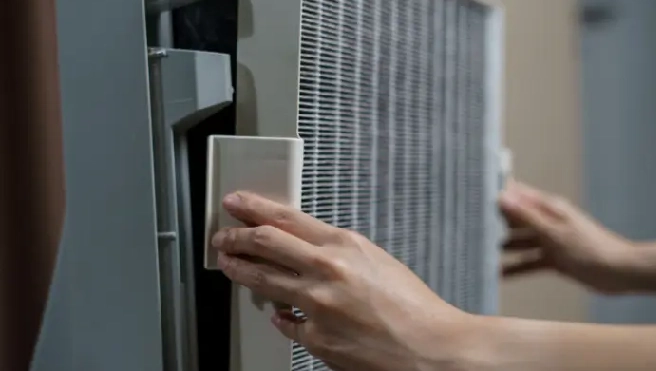
If you're looking for how to get rid of allergens in the home, consider investing in a HEPA filter. The high-efficiency particulate air filters are designed to remove at least 99.7% of the particulates in the air, including dust, dust mites, pet dander, pollen, bacteria, mold spores, and more. These filter systems capture and retain airborne particles, improving your home's air quality. Whether integrated into an air purifier or a vacuum cleaner, HEPA filters can play a significant role in reducing allergens in your home.
Keep Your Home Allergy-Free Today
You now have the knowledge to make your home an allergy-free haven. By implementing these steps for how to remove allergens from your home, you can significantly improve your indoor air quality and enjoy a healthier living environment.
If you’d like professional assistance with reducing allergens in your home and keeping your space clean, your local cleaning pros at Molly Maid® are ready to help. You can count on being satisfied with our home cleaning services, because all our work is backed by the Neighborly Done Right Promise®, ensuring a high standard of excellence. We know the job isn’t done until it’s done right.
For a whole-house clean you can rely on, get your free estimate today.
